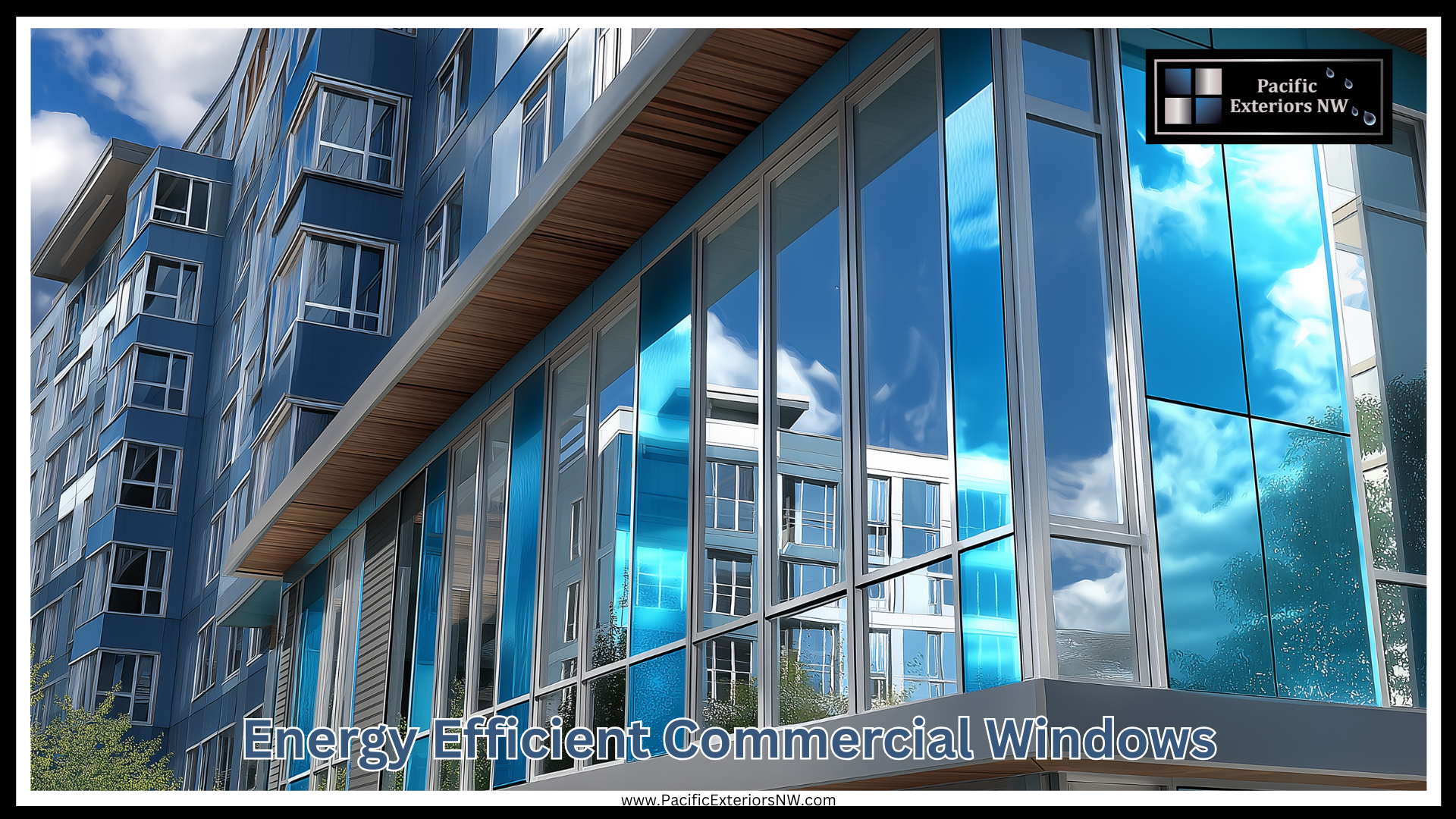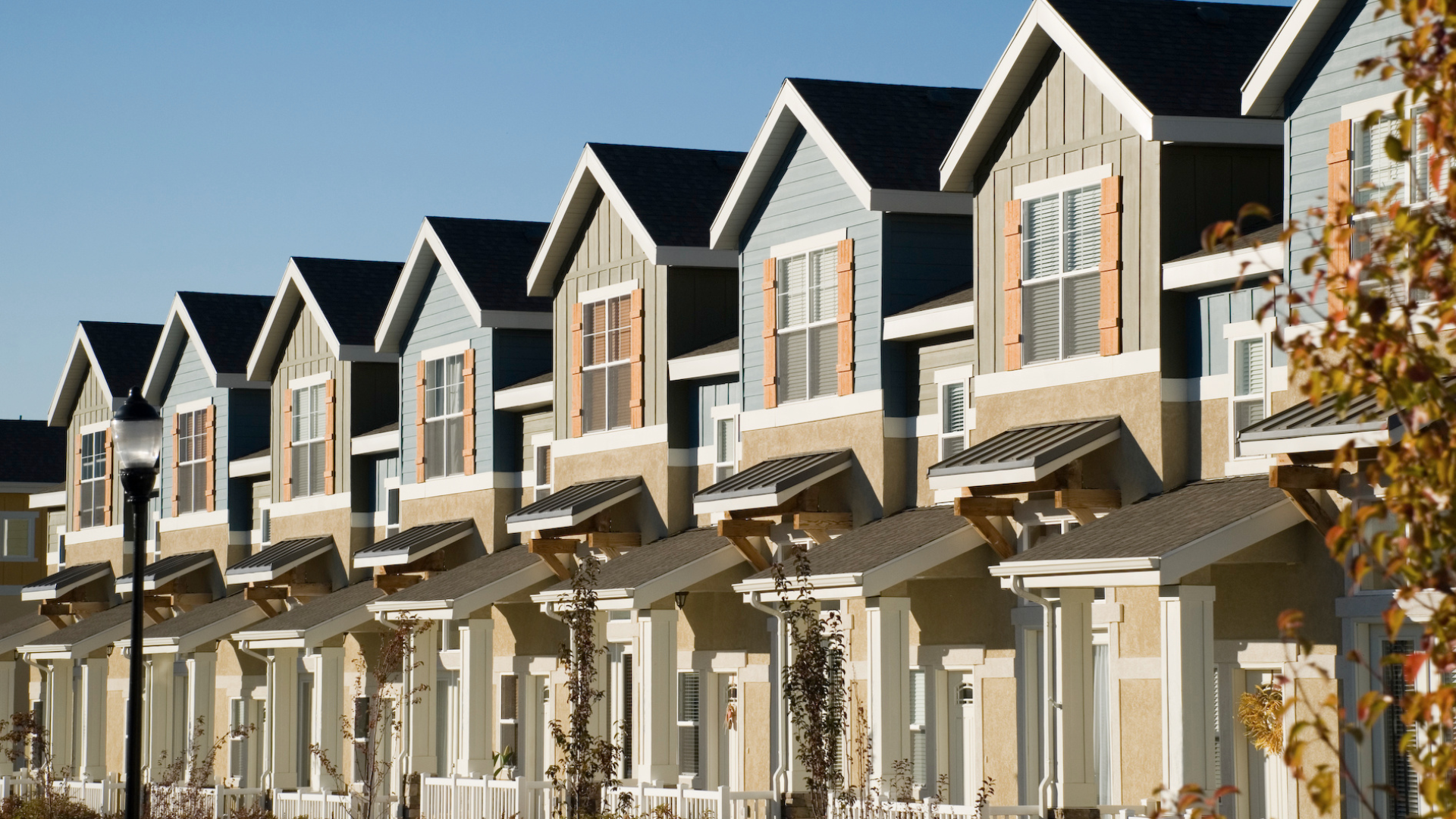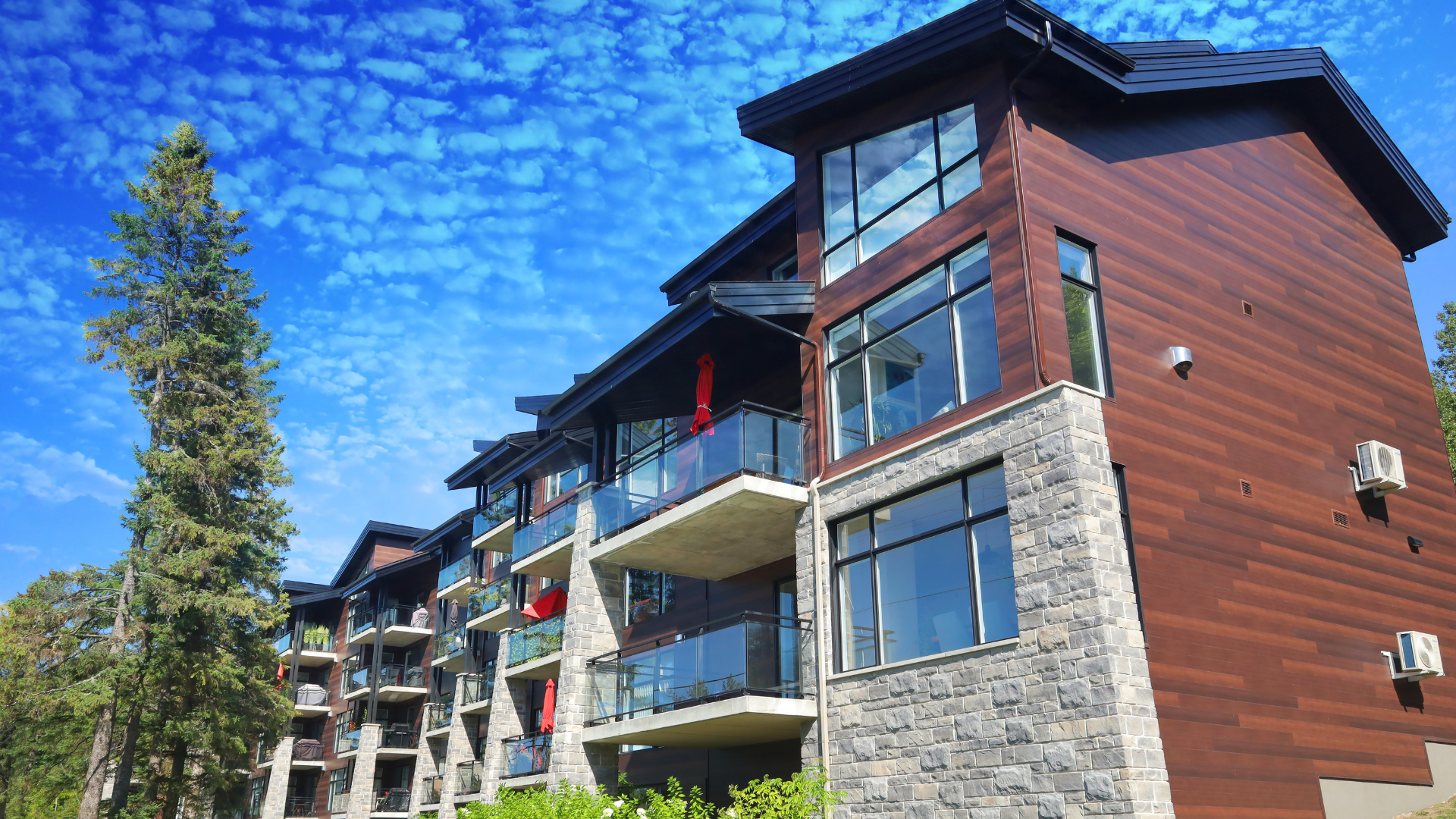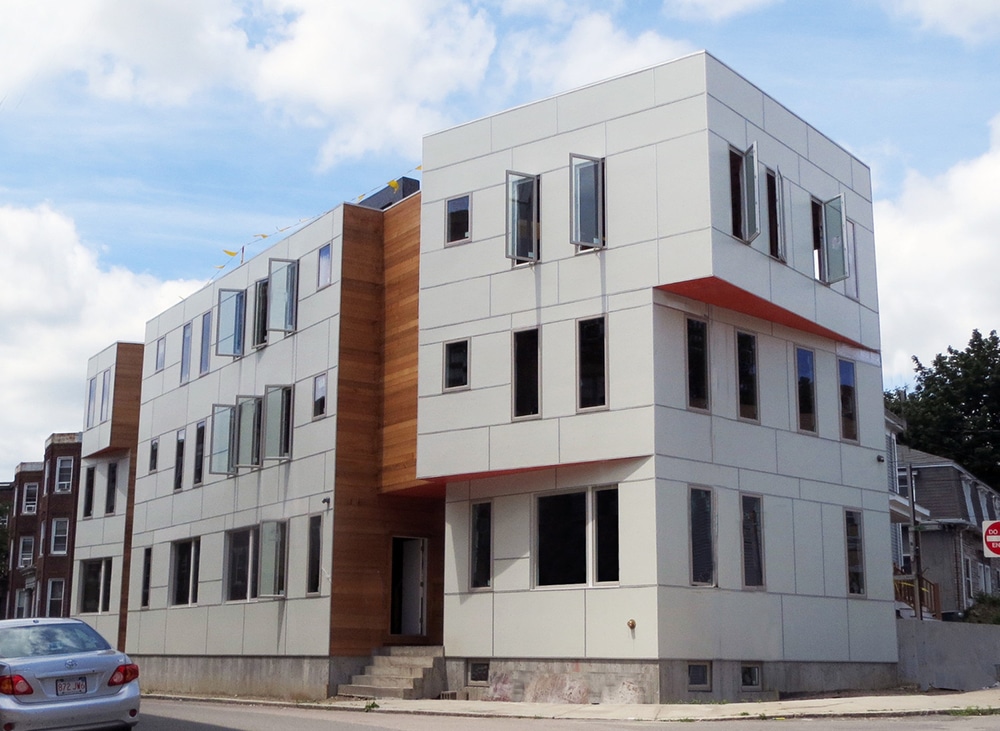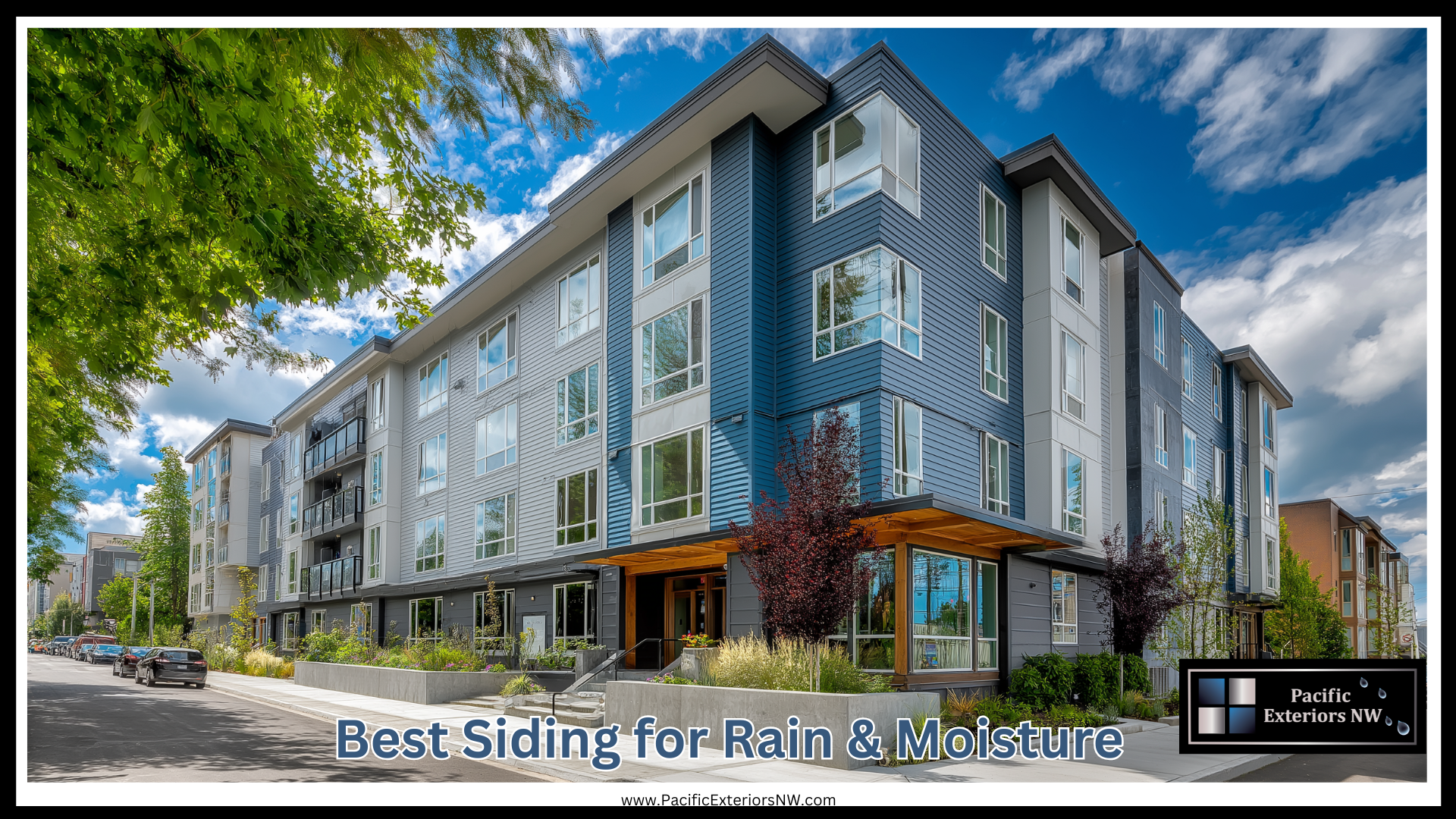
Your building is a major investment, and in the case of apartments, townhomes, and hotels, it’s also your income stream. Keeping it protected from the elements isn’t just smart; it’s essential. While siding adds visual appeal, its true role is shielding your property from rain, humidity, and moisture infiltration.
Whether you’re managing a multifamily development or renovating an aging complex, selecting the best siding for rain and moisture resistance helps preserve your structure’s integrity, reduces repair costs, and enhances long-term value.
The Building Envelope: More Than Just a Pretty Face
Your building envelope is the protective shell that includes the roof, walls, windows, doors, and foundation. Siding is a key component of this system, especially when it comes to keeping moisture out and energy efficiency in.
In wet climates, the right siding paired with a well-constructed weather barrier can prevent mold, rot, and long-term structural damage, issues that are expensive and disruptive in tenant-occupied properties.
Why Moisture Management Matters in Multi-Unit Buildings
Water intrusion isn’t just an eyesore—it’s a liability. Moisture can degrade framing, damage insulation, and create conditions for mold growth, all of which impact tenant satisfaction, health, and your bottom line.
Here are the key characteristics to consider in moisture-resistant siding:
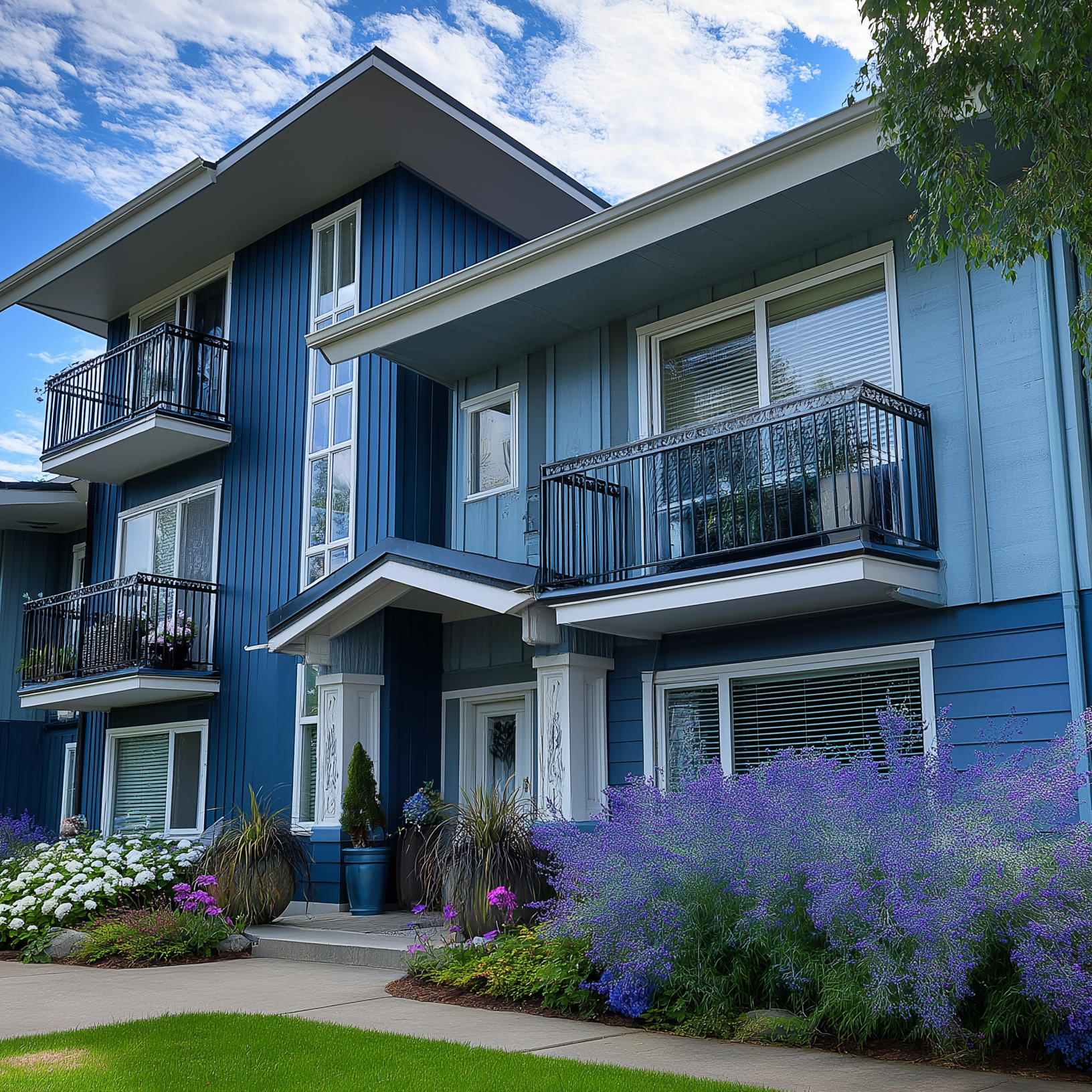
Rot Resistance
In commercial applications, durability is non-negotiable. Rot-resistant materials prevent warping, breakdown, and structural compromise—especially important in coastal or high-humidity regions.
Mold Prevention
For buildings with shared HVAC systems or close living quarters, preventing mold isn’t just a maintenance issue—it’s a health imperative. Selecting siding and barrier systems that resist mold growth protects both property and occupants.
Breathability
Multi-unit properties generate significant interior humidity—from showers, cooking, and heating systems. Choosing breathable siding allows moisture vapor to escape while blocking outside water, maintaining a dry, balanced wall assembly.
Drainage Plane Integration
A drainage plane system behind the siding redirects any water that penetrates the exterior, ensuring it drains downward and out. For properties with multiple stories or complex rooflines, this layer is a critical defense against long-term water infiltration.
Critical Layers of Moisture Defense
Rain-resistant siding is only part of the system. A properly layered wall assembly matters just as much.
Wall Structure and Weather Barrier
Behind every siding panel lies a complex system of sheathing, house wrap (WRB), and optional furring strips that allow drainage. These components ensure your siding performs well even during wind-driven rain or sustained humidity.
On commercial projects, additional considerations, such as meeting fire ratings, complying with local code for WRBs, and using commercial-grade sealants, should factor into the build plan.
Trim, Accessories, and Flashing
Commercial siding systems rely heavily on proper detailing:
- Starter strips and J-channel create clean finishes and moisture redirection.
- Soffits and fascia help with attic ventilation and protect roof edges.
- Corner trim, flashing, and sealants around all windows, doors, and vents prevent water intrusion.
- Weep holes, common in some cladding systems, allow trapped moisture to escape.
These components aren’t cosmetic; they’re functional safeguards that reduce risk and extend the life of your building.
Best Siding Options for Moisture-Heavy Environments
Each of the following siding materials has proven performance in wet climates and is widely used in commercial construction:
Fiber Cement (e.g., Hardie Board)
Fiber cement siding is a powerhouse for multifamily and hotel exteriors. Its resistance to rot, moisture, pests, and fire makes it a smart investment in high-exposure environments.
It does require painting and sealing, and installation should include furring strips and breathable barriers to allow drainage. With the correct setup, it offers decades of durable, attractive performance.
Engineered Wood (e.g., LP SmartSide)
Engineered wood delivers curb appeal with enhanced performance. It mimics the appearance of traditional wood but is treated to resist moisture, decay, and insect damage.
Commercial projects using LP SmartSide benefit from lighter-weight panels and easier installation, while still maintaining moisture resistance when installed with proper drainage planes and ventilation gaps.
Metal Siding: Steel & Aluminum
Steel and aluminum siding systems offer excellent water resistance and durability. Steel’s strength is ideal for high-traffic or impact-prone areas, while aluminum resists corrosion and requires minimal upkeep.
These materials are commonly used in modern commercial designs and are often employed for accent areas or full-scale facades. Use with rigid insulation and proper flashing to mitigate thermal bridging.
Composite Panels
Composite cladding—made from a mix of plastics, fibers, and sometimes cement—is increasingly used in commercial siding due to its high performance, longevity, and design flexibility.
Many composite panels interlock for maximum moisture protection and are manufactured with built-in UV and mold resistance. They’re ideal for low-maintenance property management.
Treated Cedar Siding (Limited Use)
While wood siding is rare in new commercial builds, treated cedar is sometimes used in boutique townhome or luxury resort applications. Cedar offers natural beauty and moisture resistance, but requires regular sealing and inspection.
Consider cedar only in low-rise or feature areas, with a comprehensive water management system in place.
Moisture Management Beyond the Walls
To create a moisture-resistant structure, siding must work in concert with other systems:
Roof & Gutter Integration
Proper roof slope, drainage, and commercial-grade gutters are crucial for directing water away from siding and the foundation. Overflowing gutters can damage walls and cause erosion at the base of the structure.
Foundation Drainage
Commercial foundations must include positive grading and, in many cases, drain tile systems to prevent capillary water movement from the ground into wall assemblies.
Mechanical Ventilation
High-occupancy buildings benefit from HVAC systems that regulate humidity. Good attic and crawlspace ventilation also helps prevent internal condensation from damaging insulation and wall materials.
Professional Installation & Oversight
Unlike single-family homes, commercial siding installation requires larger crews, tighter timelines, and inspections for code compliance. Your contractor should be familiar with:
- Local code for commercial wall assemblies
- Fire-rated and moisture-rated WRBs
- Proper detailing for multi-story drainage planes
- Building movement allowances (especially for panel systems)
The goal is to create a high-performance building envelope that requires minimal repair over time.
Final Thoughts: Why Moisture-Resistant Siding Matters for Commercial Projects
Choosing moisture-resistant siding is more than a design choice; it’s a risk management strategy.
Every decision, from materials to drainage detailing, affects your building’s long-term resilience, maintenance costs, and even tenant satisfaction. Whether you manage a 6-unit townhome or a 60-room boutique hotel, investing in the right siding solution now prevents costly repairs and complaints later.
FAQ’s
What makes siding “commercial-grade” for moisture resistance?
Commercial-grade siding often meets stricter standards for durability, fire rating, and installation. Look for products that have undergone third-party testing, offer warranties, and possess moisture resistance certifications suitable for multi-family or hospitality applications.
How do moisture issues differ in commercial vs. residential buildings?
Commercial buildings often feature flat roofs, minimal overhangs, and shared walls—all of which increase the risk of moisture. Plus, occupant density and operational systems (like shared HVAC) amplify internal humidity that must be managed with ventilation and proper siding choices.
Should I use the same siding on all parts of a commercial building?
Not necessarily. Many projects use durable panels (like fiber cement or metal) on high-exposure areas and decorative options (like engineered wood or composite) for accents or upper stories. The key is matching the siding to the exposure level and maintenance expectations.
How often should commercial siding be inspected?
A good rule of thumb: inspect annually, especially after severe weather. Check for cracks, sealant failure, blocked weep holes, and clogged gutters. Routine inspections reduce long-term maintenance costs and protect your investment.



